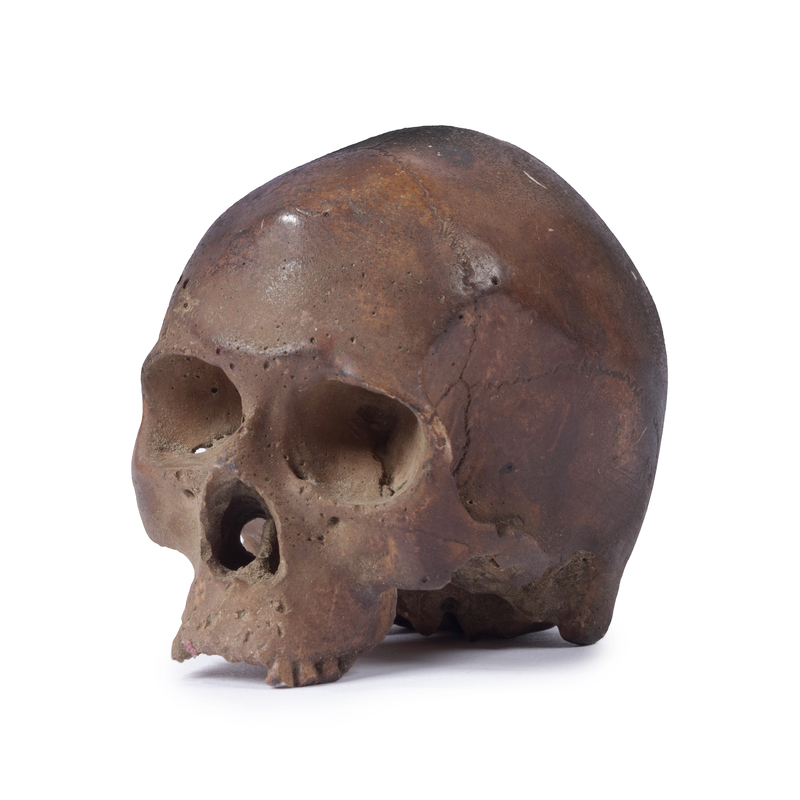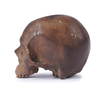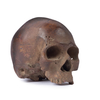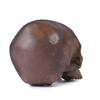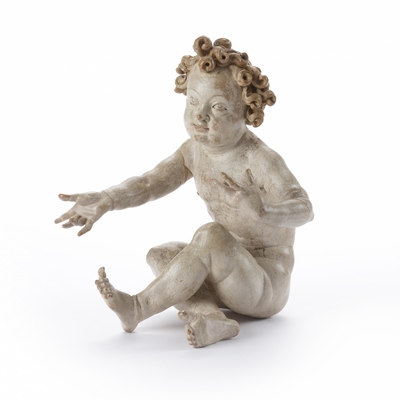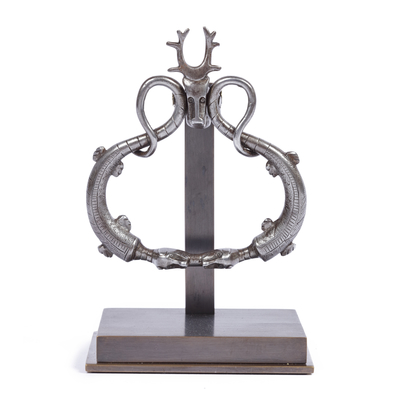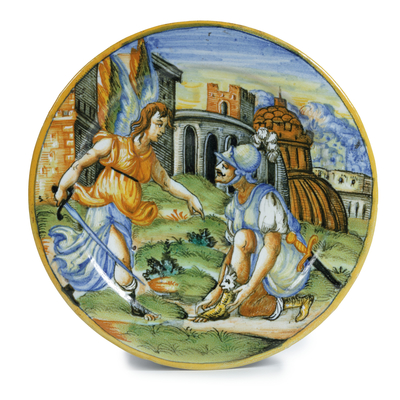Terracotta bozetto
Global shipping available
- Origin
- Italy
- Period
- 17th century
- Material
- Terracotta
- Height
- 7.5 cm
- Width
- 7 cm
- Depth
- 7.5 cm
- Literature
F. M. Kammel, P. Aries, ‘Looking death in the eye. Transience as the theme of small baroque sculptures’, in: G. Laue, Memento Mori, Kunstkammer Georg Laue, München 2002
Questions about this object?
Please use one of the contact options below:
Description
This detailed terracotta skull shows the Latin motto Memento Mori: remember death. It reminds man of his mortality and the transience of life. The memento mori motif is connected with the vanitas theme in which emptiness, temporality, and transience are central. In the seventeenth and eighteenth centuries, the allegory of transience and death is often called the counterpart of Baroque sensuality and exuberance. The numerous vanitas objects for private use reminded man that he was not divine, but merely mortal. One of the most impressive symbols of the memento mori is the skull, the personification of death. It is both a warning and an object that calls for contemplation.
This skull is a bozzetto, a preliminary study for a work of art. Using a bozzetto, the artist could show the client what his intention was and changes could still be made. It is a very detailed and beautiful bozzetto, showing the lines between the bone parts and some teeth. This bozzetto could have served as a model for a larger skull or for a small skull made out of wood or ivory: similar objects had a place in many art cabinets.
